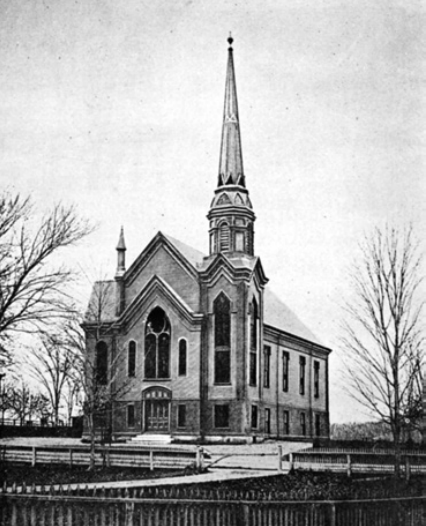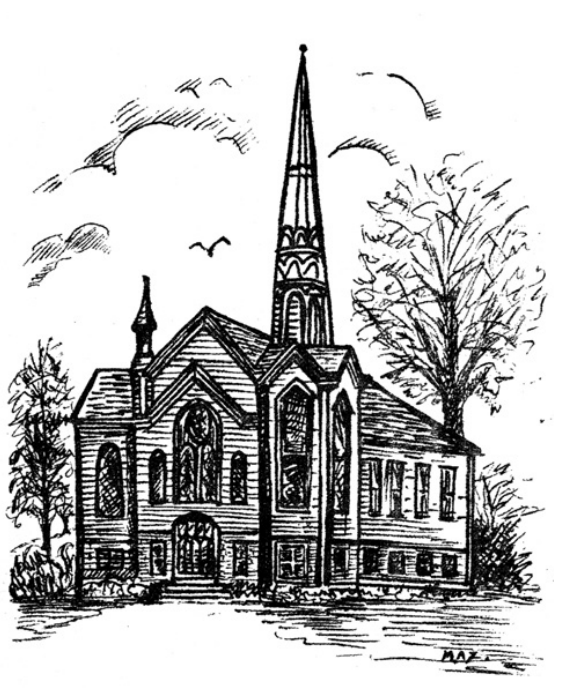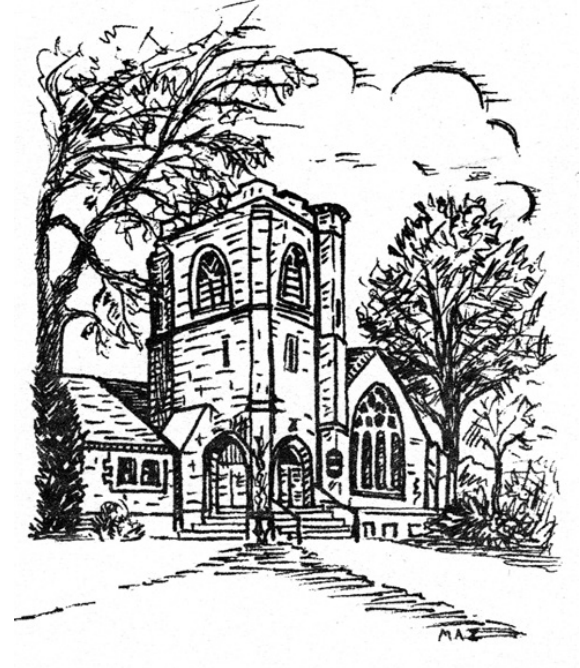History
The Beginning of Unitarianism in Winchester
The Winchester Unitarian Society was formally organized in 1865, fostered by a spirit of Unitarianism that had been alive and growing in Winchester for many years prior to that date. In fact, the Unitarian doctrine was first preached in Winchester as far back as 1636 by the Reverend Zechariah Symmes, an early arrival in Charlestown who became minister of the First Church (Boston) in 1636. Reverend Mr. Symmes received a section of the Waterfield part of Charlestown, now known as Winchester.
After the death of Mr. Symmes, his descendants and other families in the community continued to adhere to their Unitarian beliefs. They met in small groups in homes and occasionally attended services in the First Parish in Medford. Meetings were later held on Sunday afternoons in the old Mystic School House, where clergymen from Cambridge, Woburn, and Medford preached not only to the adults but also to the children.
Even before the official founding of the present Winchester Unitarian Society, Edwin A. Wadleigh organized a Unitarian Sunday School in 1855, and for four years the school met at the home of Mrs. Mary Sharon, located at the corner of Main Street and Black Horse Terrace. At the time, Mrs. Sharon was matron of the Industrial School for Girls, then located on Eaton Street, and it was a familiar sight on Sundays to observe Mrs. Sharon marching her girls from the school to her home for Sunday school services. When in the fall of 1858 the Industrial School was removed from town and Mrs. Sharon retired to live in her home, it was decided to discontinue the Sunday school temporarily.
The growing clouds of the impending Civil War and the war years themselves delayed the founding of the church for a decade. The spirit of Unitarianism was kept alive mainly by the Symmes Corner Unitarians. Among them was Luther H. Symmes, who kept in his home the book of the Sunday school and the large Sunday school Bible, given by the Honorable Albert Fearing. Mr. Symmes invited both children and adults to visit his home, read the books, and take them home as often as desired. During these ten years, the Winchester Unitarians attended services in Woburn and Medford and their children were enrolled in the Sunday schools of these churches.
The Establishment of Winchester Unitarian Society

Following the war, Dr. Frederick Winsor, who had served the Northern troops as regimental surgeon, came to Winchester and purchased the house and practice of Dr. William Ingalls. In his home at the northern corner of Main and Mount Vernon Streets, the Winchester Unitarian Society had its beginning on Sunday afternoon, November 19, 1865, when twenty-five men and women gathered in the Winsor’s parlor to listen to a sermon by the Reverend Samuel R. Calthrop, a Harvard classmate of Dr. Winsor, who had been invited to come from Cambridge for a weekend and bring a sermon or two. Mr. Calthrop and his sermon were so well received that he was invited to return the following Sunday with another sermon in his grip. On the second occasion, the group had already outgrown the Winsor’s parlor and had to meet in Lower Lyceum Hall to accommodate the eighty enthusiastic citizens. It was apparent after these two Sunday meetings that the propitious time for organizing a Unitarian Church in Winchester had come. Four days later, on November 29th, 1865, the Articles of Association were drawn up and signed. The signers of these Articles made pledges from $.50 to $100.
For the next six months supply ministers preached weekly to an ever increasing congregation in Upper Lyceum Hall. On June 14, 1866, the Reverend Richard Metcalf was installed as the first settled minister. A graduate of Brown University, he was called here from Providence and served the church for fifteen years.
The membership had so increased by 1869 that a church building was deemed both possible and necessary. Land was purchased on Main Street about two hundred yards south of the present building and the cornerstone was laid on August 25, 1869. In March of 1870, the building was completed and dedicated at a total cost, including land, building, and furnishings, of $27,000, most of which had been raised by subscription. The structure contained seventy-two pews seating 380, and in addition there were fourteen pews in the gallery.
The Fire and Rebuilding
The gray wooden church with its impressive corner spire was destroyed by fire on November 16, 1897. Several previous parishioners recalled watching the fire as small children, which consumed the building in one hour. The cause of the fire was never officially recorded. Legend has it that two boys playing in the carriage sheds behind the Church were responsible. Reportedly, they were banished from town and later “turned out well.”
The fire was a great blow to the Church, for the building was in perfect repair and a new organ had only recently been installed. Expressions of sympathy and offers of assistance poured in from all sides. All churches in Winchester invited the Unitarians to worship with them. A former historian stated on the occasion of the semi-centennial that it was a heart-warming experience because it gave evidence that the other churches believed the Unitarian Church to be a real Church of God and a pillar of strength to the town. On the first Sunday following the fire, the Unitarians worshiped at the First Congregational Church and thereafter met in the Small Town Hall until the present building was erected.
The rebuilding program was marked by a phenomenal display of energy, spirit, and cooperation. Within five days of the fire, a committee of twenty-five members of the parish met in the Town Hall to plan for a new church. Many of the younger members of the parish accepted the destruction with mixed feelings and actually looked forward to a structure more in keeping with the times. Mr. Lewis Parkhurst, who was a member of the sub-committee on site for the new church, wrote in his “Recollections” that there was considerable discussion about the location of the new building. Some wanted it on the west side of town and others on the east side. It was finally agreed to locate on the east of the Palmer lot. The Palmer homestead, which stood in the middle of the lot, was moved to 60 Lloyd Street, where it stands today.
Dedicated committee work and construction proceeded so quickly that the new building, made of Quincy granite, was dedicated in 1899. The total cost, including land, building, and furnishings, was $40,000. The dedication of the church coincided with another significant event for the parish—the installation of the Reverend William I. Lawrance, who was to become one of the outstanding leaders of the Unitarian denomination. The will to work and sacrifice for the new church was remarkable; generous gifts from the parish and the Winsor family paid off the debt in a few years.


More Information
This is an edited and condensed version of a book, published by the congregation’s 150th Anniversary Team, that explores Winchester Unitarian Society’s history from 1865-2015. Click here for a PDF of the full book.
